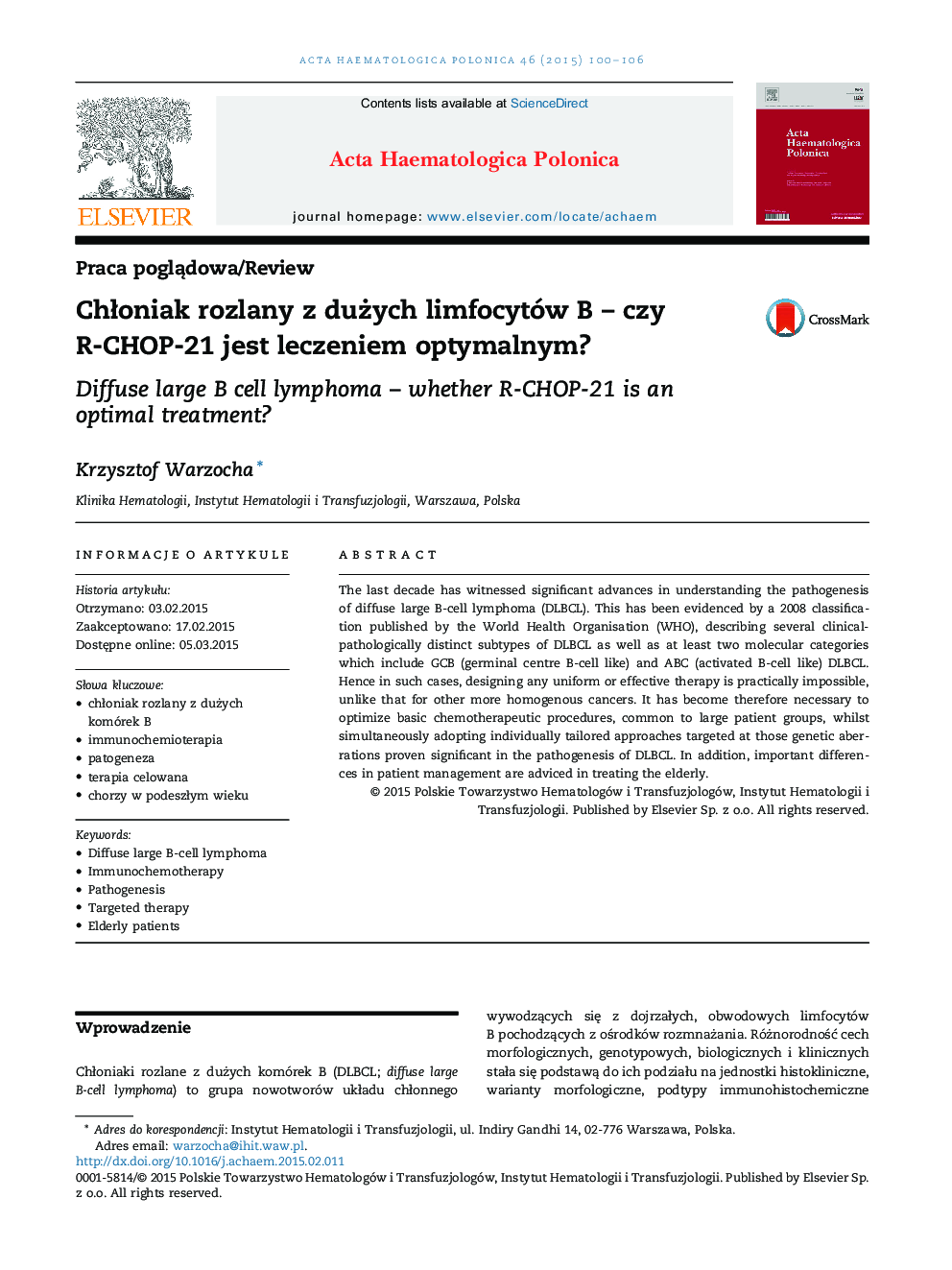| Article ID | Journal | Published Year | Pages | File Type |
|---|---|---|---|---|
| 3328111 | Acta Haematologica Polonica | 2015 | 7 Pages |
The last decade has witnessed significant advances in understanding the pathogenesis of diffuse large B-cell lymphoma (DLBCL). This has been evidenced by a 2008 classification published by the World Health Organisation (WHO), describing several clinical-pathologically distinct subtypes of DLBCL as well as at least two molecular categories which include GCB (germinal centre B-cell like) and ABC (activated B-cell like) DLBCL. Hence in such cases, designing any uniform or effective therapy is practically impossible, unlike that for other more homogenous cancers. It has become therefore necessary to optimize basic chemotherapeutic procedures, common to large patient groups, whilst simultaneously adopting individually tailored approaches targeted at those genetic aberrations proven significant in the pathogenesis of DLBCL. In addition, important differences in patient management are adviced in treating the elderly.
